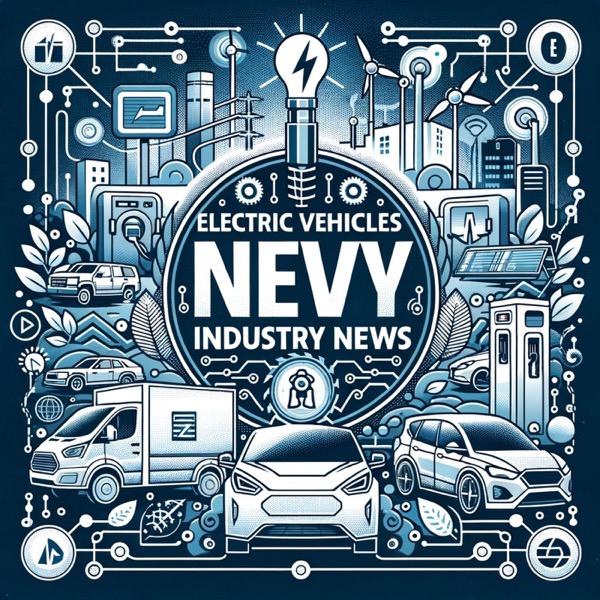EV Industry Transformation: Pricing Strategies, Regulatory Shifts, and Emerging Competitors
Electric Vehicles Industry News - En podcast av Quiet. Please

The electric vehicle (EV) industry is undergoing significant transformations driven by technological advancements, shifting consumer preferences, and regulatory changes. Recent market movements indicate a growing demand for EVs, with experts predicting that they will represent 20-25% of new vehicle sales in the U.S. by 2025[3].One of the key factors driving this growth is the introduction of stricter emissions regulations. Federal and state governments in the U.S. have set tougher CO2 emission targets, with states like California planning to ban internal combustion engine (ICE) vehicles by 2035. This has led consumers and manufacturers to transition to cleaner alternatives[3].Advances in battery technology have also made EVs more accessible. Lower battery costs and improved range have increased their appeal, with faster charging times further enhancing their attractiveness. By 2025, EV prices are expected to match those of ICE vehicles, encouraging widespread adoption[3].The market is also seeing the emergence of new competitors. Chinese auto brands and other foreign OEMs are offering a wide range of new models that are attracting interest among European customers. For instance, BYD and Tesla accounted for 35% of all electric car sales in 2023, while Hyundai-Kia overtook GM and Ford in the U.S. market[2].However, the industry is also facing challenges. The recent surge in demand for EVs has driven up prices, making them less affordable for some consumers. This has led to a shift towards used cars, with dealerships reporting a 40% increase in customers exploring pre-owned options priced between $15,000 and $25,000[5].In response to these challenges, industry leaders are adjusting their strategies. Automakers are enhancing their pricing strategies to attract more buyers, offering rebates, cashback offers, and low-APR financing. They are also focusing on reducing manufacturing costs to provide room for price adjustments without sacrificing profitability[1].Regulatory changes are also playing a crucial role in shaping the EV market. Tax breaks and subsidies for EVs have encouraged buyers to make the switch, but these policies have also driven up demand and prices. Stricter environmental regulations have increased production costs, impacting pricing for traditional gasoline-powered cars[1].In conclusion, the EV industry is experiencing rapid growth driven by technological advancements, shifting consumer preferences, and regulatory changes. While challenges such as high prices and supply chain disruptions persist, industry leaders are responding by adjusting their pricing strategies and focusing on reducing manufacturing costs. As the market continues to evolve, it is expected that EVs will become increasingly competitive with traditional ICE vehicles, leading to widespread adoption.Recent statistics and data from the past week include:- A 40% increase in customers exploring pre-owned options priced between $15,000 and $25,000[5].- A predicted 3-5% decrease in new car prices by late 2025 due to improved availability of semiconductor chips, stabilized supply chains, increased production capacity, and adjustments in market competition[5].- EVs are expected to represent 20-25% of new vehicle sales in the U.S. by 2025[3].- BYD and Tesla accounted for 35% of all electric car sales in 2023[2].
